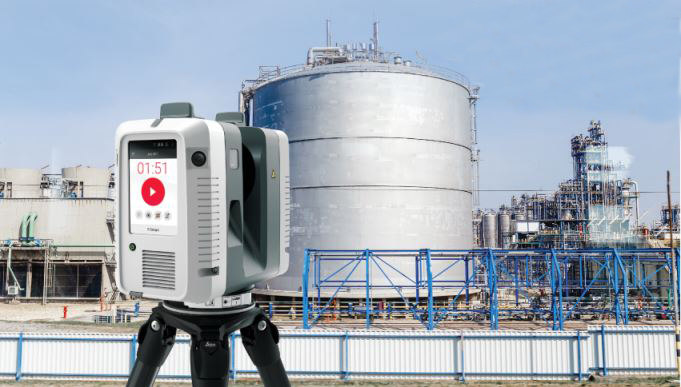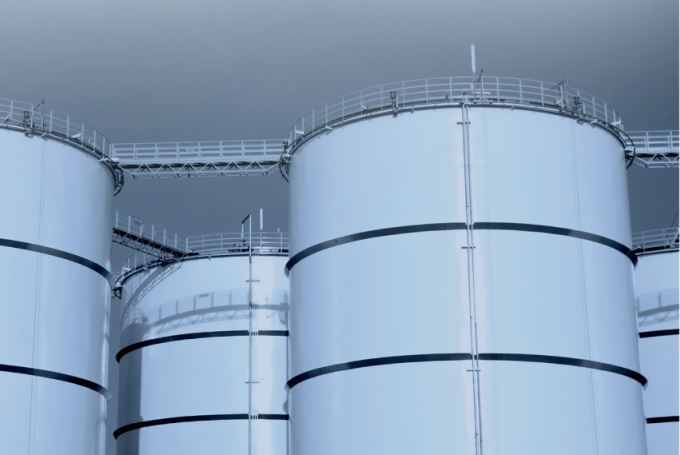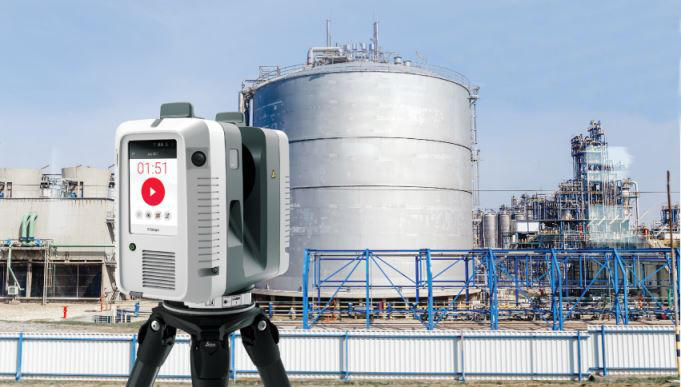The digitalization of tank maintenance and analysis through reality capture is a proven way to increase safety and reduce risk. Joel Hurt, Jr., vice president of industrial plant solutions in the U.S. and Canada for Leica Geosystems, part Hexagon, explains how recent developments in laser scanning have removed the barriers to digital data adoption.
Laser scanning is a noncontact and nondestructive method of digitally capturing physical objects in 3D using a beam of light, or laser. It is a fast, accurate and safe way to capture digital tank data. In a matter of minutes, laser scanning can capture comprehensive tank data in the form of a point cloud at accuracies of <2 mm, without ladders, scaffolds or lifts.
Companies use laser scanning to quickly and safely create digital documentation on both in-service and out-of-service tanks to identify problems early on in tank maintenance processes. Having access to comprehensive, accurate digital data reduces downtime, allows out-of-service tanks to be put back into service much sooner, and aids in averting fines due to potential leaks and tank deformation. All of these benefits combine to drive down risk, making laser scanning increasingly attractive to tank asset owners and managers. Now, new technology advances are paving the way for a digital transformation in the tank industry.

The latest advances, introduced with the Leica RTC360, make laser scanning even more accessible by accelerating the scanning speed to 2 million points per second (less than two minutes for a full tank scan).
A 3D Solution for Every Tank Situation
Any company that has wanted to digitize the capture of tank data now has a fast, easy pathway to get there.
Within the last several years, laser scanners have been developed that make it possible to capture clean, accurate 3D data with high dynamic range (HDR) imaging at a fast scan rate of 1 million points per second. Software advances have made working with point clouds fast and easy, even when integrating point cloud data into existing CAD workflows.
The process of registering a point cloud – aligning point clouds captured from different scanning positions – has also become much faster and easier thanks to advances in technology. Using industry-standard professional-grade laser scanners such as the Leica ScanStation P30 or P40 in combination with Leica Cyclone software, you can quickly process large point cloud data sets and publish point clouds on the web for improved visualization and communication with key stakeholders. Tank analysis software such as 3D Reshaper lets you import scan data to conduct roundness and verticality checks, create strapping tables, and assess settlement, all with streamlined reporting capabilities.
The latest advances, introduced with the Leica RTC360, make laser scanning even more accessible by accelerating the scanning speed to 2 million points per second (less than two minutes for a full tank scan in many cases); by making the user interface simple and intuitive; and by automating the registration process so that it happens in real time in the field as the data is captured rather than as a separate step in the office. The newest technology is also lightweight and can be inverted, which enables tanks to be scanned through manways. As a result, any company that has wanted to digitize the capture of tank data now has a fast, easy pathway to get there.

The Safest, Fastest Tank Gauging Method
For anyone in the tank and terminal industry who has been waiting for the right time to digitize their tank maintenance and analysis process, that time is now.
As the tank industry continues to push for advances in personnel safety and inventory accuracy, laser scanning reality capture will play an increasingly important role for several reasons:
- The ability to capture a complete tank scan in less than two minutes and from tank manways minimizes the amount of time anyone has to spend in the tank capturing measurements, driving up safety by orders of magnitude.
- The ability to scan at the touch of a button and automatically track your movement from station to station makes the technology simple to learn and use, allowing professionals at any skill level to capture accurate 3D tank data.
- Easy in-field registration saves significant time in both the field and office, enabling tanks to be put back into production faster.
For anyone in the tank and terminal industry who has been waiting for the right time to digitize their tank maintenance and analysis process, that time is now.
